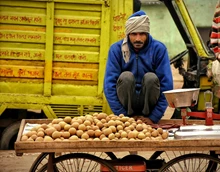
The current population of world is estimated to be at 7.59 billion and the population is expected to increase at a rate of just over a percentage to around 9.5 billion by 2050. This raises the question of natural resources and whether they are enough to provide for a large population.
The Developing countries that hold the majority of the global population have seen mass urbanisation, and with the size of urban agglomeration increasing day by day the agricultural lands are decreasing. In India the urban population is expected to grow from 410 million now to 814 million by 2050.
The total cultivable land on the planet covers roughly 11% of the total world’s surface and the population has been increasing at a pace far more than the area of agricultural production. For instance the world’s population stood at 1 billion in 1830 and it took 100 years for it double. From 1930 it just took 45 years for the population to increase from 2 billion to 4 billion despite the Second World War and within 24 years the population further increased by 2 billion.
This has led to the exploitation of land in order to provide more resources as people look to increase production but it leads to imbalance in the ecosystem. Experts say that this has led to natural disasters like flood and drought becoming more frequent which further burdens agriculture.

These challenges have now reached such heights that they need to be addressed immediately and there are several measures that the world needs to take right now, out of which the most important is the control of the birth rate which is the core problem and addressing this problem will go a long way in solving this problem.
Other measures include increasing the food production using methods such as Intensive Agriculture, an initiative that the NITI Aayog had strongly recommended in its 2017 report “Doubling Farmer’s Income”. Agriculture also needs to become innovative in its quest for increase in food production. It is clear to all that the population is surely bound to increase and it will surely affect the coverage of the agricultural land and thus new avenues such as vertical farming, Hydroponics need to be introduced. The cities should be developed on a hybrid model where sprawling buildings can have offices, homes or green farms.
The monster of population rise is real and we have let it come too far and now we must face it because that is the only option we have.










